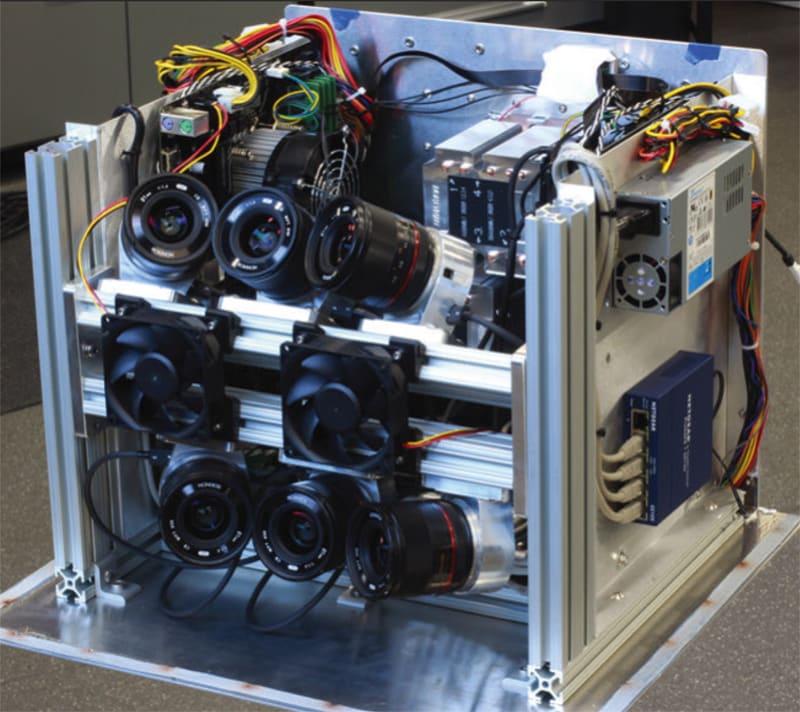Operating multiple unmanned aircraft systems (UAS) has been enabled using an interconnected swarm to provide capabilities for situational awareness, defense, and logistics. To enable the testing capability, researchers worked with PhaseSpace to develop a new motion-capture capability that works for outdoor use where sunlight interferes with motion-capture devices typically used for purposes such as video game development.
This new capability enables a wider scale of testing — from indoor testing in small rooms or spaces typically smaller than half of a basketball court, to the size of five football fields. This allows researchers to replicate more realistic UAS operation conditions and conduct experiments that were previously not possible such as using cameras to navigate terrain, test RF communication within a swarm, and fly larger drones.

The system enables advancements in multi-agent collaborative navigation technologies, heterogeneous swarming concepts, ground/aerial agent interactions, counter-unmanned aircraft systems, and human-agent teaming.
PhaseSpace developed the system to track motion, creating brightly illuminated LED marker strobes that attach to the UAS test devices and move throughout the entirety of the testing area.
To track the LED markers, 96 cameras housed within 16 tracking pods are positioned around the perimeter of the testing area.
Evaluation of the system demonstrated accurate marker tracking within a space of 460 × 110 × 70 meters — more than 1,500 times as large as a typical 15 × 15 × 10-meter system. The system has a measurement rate of 100 Hz, meaning it measures the position of the markers 100 times every second.
The testing system is transportable and can be scaled up or down and even change shape.
For more information, contact the U.S. Army CCDC Army Research Laboratory Public Affairs at 703-693-6477.


